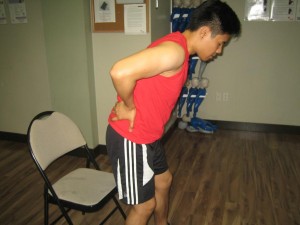A rare but serious condition, osteomyelitis is infection of the bone that is frequently caused by bacteria but may also be caused by fungi and other germs.

Osteomyelitis is the infection of the bone, a fairly rare but serious condition. It is frequently caused by bacteria but it is also known to have been caused by fungi and other germs. Osteomyelitis is can either be acquired from an infection in another part of the body that spreads into the bone through the bloodstream or from a nearby tissue, or an open fracture that leads to bone exposure, and hence infection.
It occurs in 2 out of 10,000 persons, in both children and adults. In children, the long bones of the upper arms and legs are most likely to develop osteomyelitis. On the other hand, the most commonly affected bones in adults are the vertebrae, the bones that make up the spine. Diabetics are also likely to develop osteomyelitis in their feet, if they have foot ulcers. In most cases, osteomyelitis can be treated with medications and/ or surgery.
[youtube url=”https://www.youtube.com/watch?v=3G8CVIm_IB8″ width=”220″]Causes of Osteomyelitis
Staphylococcus aureus, bacteria that exists as normal flora of the skin, is the most common culprit behind osteomyelitis. Other causes of osteomyelitis are fungi and other germs. There are general three ways to infecting the bone in the body:
- Infection that begins in another part of the body but spreads to other parts of the body, including the bone, through the blood
- Infection of the skin, muscles, tendons and other tissues neighbouring the bone that spreads to the bone, such as in cases of a skin sore
- Infection that begins in the bone after a bone surgery
- Open fractures that expose the bone to the different germs
Risk Factors for Osteomyelitis
Certain factors are known to increase chances of developing osteomyelitis, which include:
- Insufficient supply of blood to the body
- Diabetes
- Hemodialysis
- Recent injury or orthopaedic surgery, especially that involves open wounds
- Splenectomy
- Use of illegal injected drugs
Symptoms of Osteomyelitis
The following symptoms, especially if they manifest at the same time, may denote osteomyelitis:
- Pain in the bone
- Fever and chills
- Excessive sweating
- Malaise
- Pain in the lower back
- Localized swelling, redness and warmth
- Swelling of the ankles, feet, and legs
- In young children, irritability or lethargy
Treatment for Osteomyelitis
Treatment for osteomyelitis includes decreasing damage to the bone and its neighbouring tissues. The following treatments for osteomyelitis are the following:
- Medications
- Single or multiple antibiotics are typically given through IV fluids rather than orally
- May last for at least 4-6 weeks
- Surgery for removal of the dead bone tissue
- If metal plates are present near the infection, they may need to be removed
- Filling of bone graft or packing material to promote new bone tissue growth
- In some cases, replacement of replaced joint may be required
Disclaimer: This article should not be used for medical diagnosis or advice. Seek medical attention when necessary. It is highly suggested to take first aid courses to detect symptoms of serious conditions. Enrol in first aid courses to learn how to recognise symptoms and act aptly in cases of life-threatening conditions, such as osteomyelitis.
Sources:
Osteomyelitis. (2012). Mayo Clinic. Retrieved on October 8, 2013, from http://www.mayoclinic.com/health/osteomyelitis/DS00759
Osteomyelitis. (2012). National Institutes of Health. Retrieved on October 8, 2013, from http://www.nlm.nih.gov/medlineplus/ency/article/000437.htm

